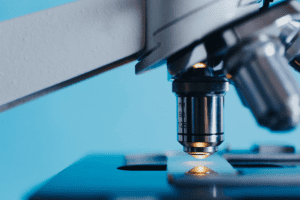Recently over the past two years there has been a large increase in the number radiation centers that are being built to provide treatment for prostate cancer patients. The technology advocated is IMRT (Intensity Modulated Radiation Therapy). Clearly this is an advanced type of radiation delivery system compared to earlier models such as 3-D conformal treatment. Data has shown that radiation therapy in the form of IMRT is effective. There is controversy regarding whether IMRT or radioactive seed implant is more effective in treating prostate cancer. An earlier study by Zelefsky at Memorial Sloan Kettering suggested a 10% benefit using brachytherapy with 7 year follow-up. More recently, a study by Dr. Pickles and associates was published in the International Journal of Radiation Oncology, Biology and Physics (Volume 76, 1, pp 43-49, 2010). This study reviewed 601 patients treated from 1998 through 2001 using a matched-pair analysis. There were 278 perfect matches between patients who had undergone either radioactive seed implant or external beam radiation therapy using IMRT technology. This group was divided with 139 patients in each arm. At 5 years of follow-up, the group that underwent brachytherapy had a 10% higher likelihood of having no evidence of tumor recurrence with 95% cure rate. While the IMRT group at 5 years had an only 85% cure rate. At 7 years, this difference became even more pronounced in that the radioactive seed implant group maintained its cure rate at 95% while the IMRT group was now only 75%, meaning there was a 25% failure rate for the IMRT group. The PSA nadir, or the level to which the PSA bottoms out, was very different at 0.04 ng/ml median value for radioactive seed implant versus 0.62 ng/ml median nadir for IMRT. This was statistically significant with a p value of <0.001. This study was performed at the Vancouver, B.C. Cancer Treatment Center. I think that this data is very worthwhile and it further demonstrates the efficacy of prostate seed implant. I think this has implications regarding patient outcome obviously, with regard to cure rate, quality of life issues, which are very favorable for brachytherapy if performed properly, and certainly cost considerations as brachytherapy is without question the most cost-effective treatment for prostate cancer.

ABOUT PROSTATE CANCER
TREATMENTOPTIONS
PATIENTS& CAREGIVERS
RESEARCH, REPORTS& RESOURCES
HOW TO HELP
NEWS & BLOG
251 N. Cass Ave., Westmont, IL 60559
630.248.0717
Copyright ® 2022 – Prostate Cancer Foundation of Chicago
Designed & Hosted by Lighthouse Marketing Services, Inc.

